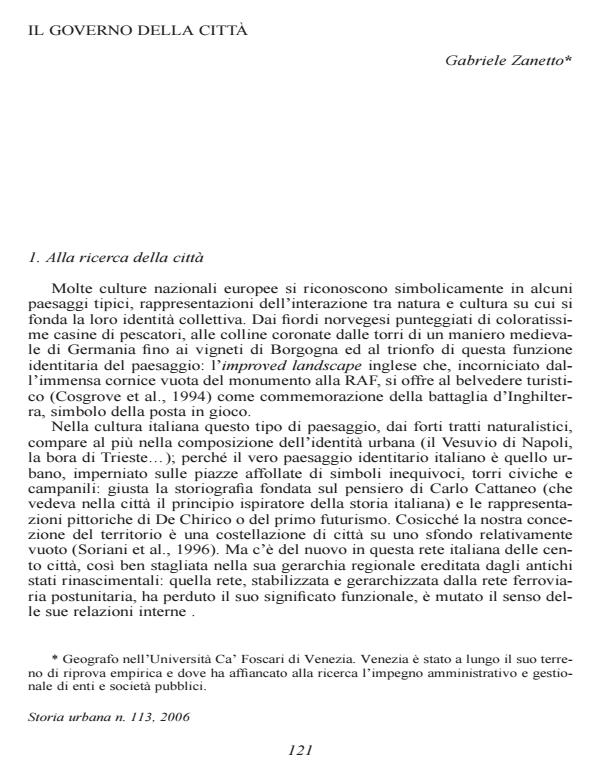Il governo della città
Titolo Rivista STORIA URBANA
Autori/Curatori Gabriele Zanetto
Anno di pubblicazione 2007 Fascicolo 2006/113 Lingua Italiano
Numero pagine 10 P. 121-130 Dimensione file 39 KB
DOI
Il DOI è il codice a barre della proprietà intellettuale: per saperne di più
clicca qui
Qui sotto puoi vedere in anteprima la prima pagina di questo articolo.
Se questo articolo ti interessa, lo puoi acquistare (e scaricare in formato pdf) seguendo le facili indicazioni per acquistare il download credit. Acquista Download Credits per scaricare questo Articolo in formato PDF

FrancoAngeli è membro della Publishers International Linking Association, Inc (PILA)associazione indipendente e non profit per facilitare (attraverso i servizi tecnologici implementati da CrossRef.org) l’accesso degli studiosi ai contenuti digitali nelle pubblicazioni professionali e scientifiche
The article opens by noting that the Italian urban network, stabilized and forced into a hierarchical order by the railways, has shed its functional significance now that Italy can be seen as a much shorter series of urban apparatuses whose size puts them more on a semi-continental than a merely national scale. We must thus think of historic centers as part of an immense and multi-faceted commuter system that moves people back and forth between home, work and services. If, then, we shift our attention from the city to the actors in it, we begin to see how difficult it is to identify the communities that city government regards as its real constituency: a problem aggravated by the refusal on the part of the Italian regulatory framework and of Italian culture on the whole to accept the emergence of metropolitan structures. Commuters, students, tourists: all are a vital part of the system that tends to be excluded, just as the region around a metropolitan area must have a voice in deciding that latter’s future. The historical portions of our metropolises provide an excellent proving grounds for testing ways of dealing with these difficulties. The role of historic centers is also the result of the shift in the centrality the many centralities that they traditionally enjoyed. Consequently, much of what was once the beating urban heart of historic centers has abandoned its former haunts which, for lack of an alternative, have simply been hollowed out. The final section of the article focuses on Venice, a city that, though it has lost many of the functions that sustained it in the past, still has an urban complexity and a power of attraction that ensure its continued vitality.;
Gabriele Zanetto, Il governo della città in "STORIA URBANA " 113/2006, pp 121-130, DOI: